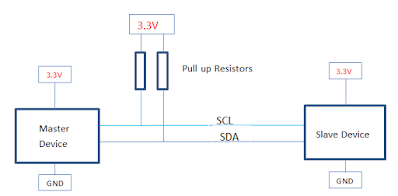PIC12F675 LED Blinking Code
PIC12F675 LED Blinking Code
This post provides the code to make an LED blink using PIC12F675 microcontroller. This code is written in C language using MPLAB X IDE with XC8 compiler. This code is intended to be the first step in learning how to use PIC12F675 microcontroller in your projects.
Code:
// PIC12F675 Configuration Bit Settings
// 'C' source line config statements
#include <xc.h>
/*define clock freq*/
#ifndef _XTAL_FREQ
#define _XTAL_FREQ 4000000 // 4MHZ crystal
#endif
This post provides the code to make an LED blink using PIC12F675 microcontroller. This code is written in C language using MPLAB X IDE with XC8 compiler. This code is intended to be the first step in learning how to use PIC12F675 microcontroller in your projects.
Code:
// PIC12F675 Configuration Bit Settings
// 'C' source line config statements
#include <xc.h>
/*define clock freq*/
#ifndef _XTAL_FREQ
#define _XTAL_FREQ 4000000 // 4MHZ crystal
#endif
// #pragma config statements should precede project file includes.
// Use project enums instead of #define for ON and OFF.
// CONFIG
#pragma config FOSC = INTRCIO // Oscillator Selection bits (INTOSC oscillator: I/O function on GP4/OSC2/CLKOUT pin, I/O function on GP5/OSC1/CLKIN)
#pragma config WDTE = OFF // Watchdog Timer Enable bit (WDT disabled)
#pragma config PWRTE = OFF // Power-Up Timer Enable bit (PWRT disabled)
#pragma config MCLRE = ON // MCLR
#pragma config BOREN = OFF // Brown-out Detect Enable bit (BOD disabled)
#pragma config CP = OFF // Code Protection bit (Program Memory code protection is disabled)
#pragma config CPD = OFF // Data Code Protection bit (Data memory code protection is disabled)
void main()
{
GPIO0=0x00; // make all GPIO port output
TRISIO=0x00; // TRISIO direction as output
ADCON0=0x00; // Internal ADC OFF
ANSEL=0x00; // All Analog selections pins are assigned as digital I/O
while(1)
{
GPIO0=1; // Make GPIO0 port high
__delay_ms(500);
GPIO0=0; // Make GPIO0 port low
__delay_ms(500);
}



GOOD WORK
ReplyDelete